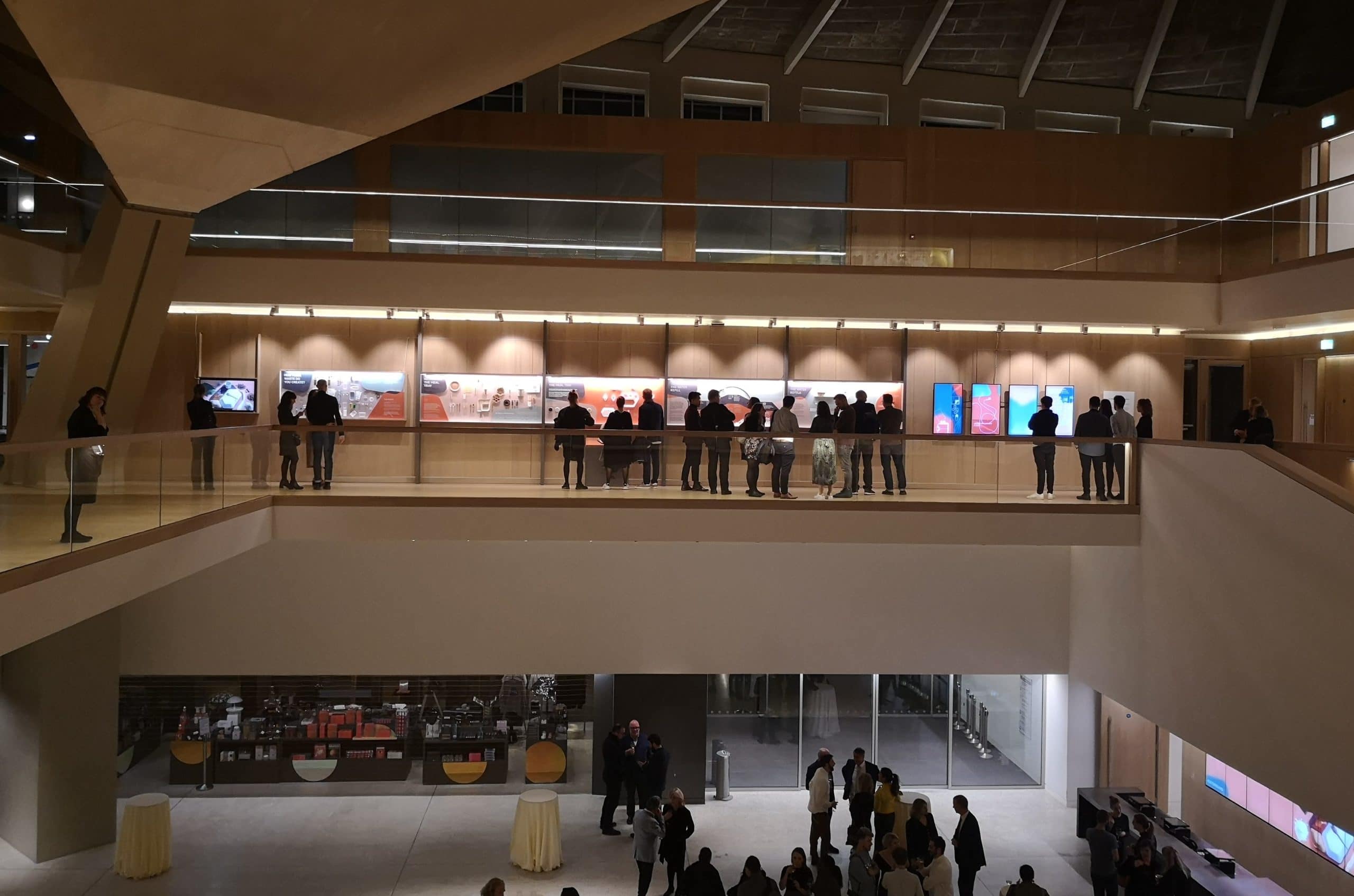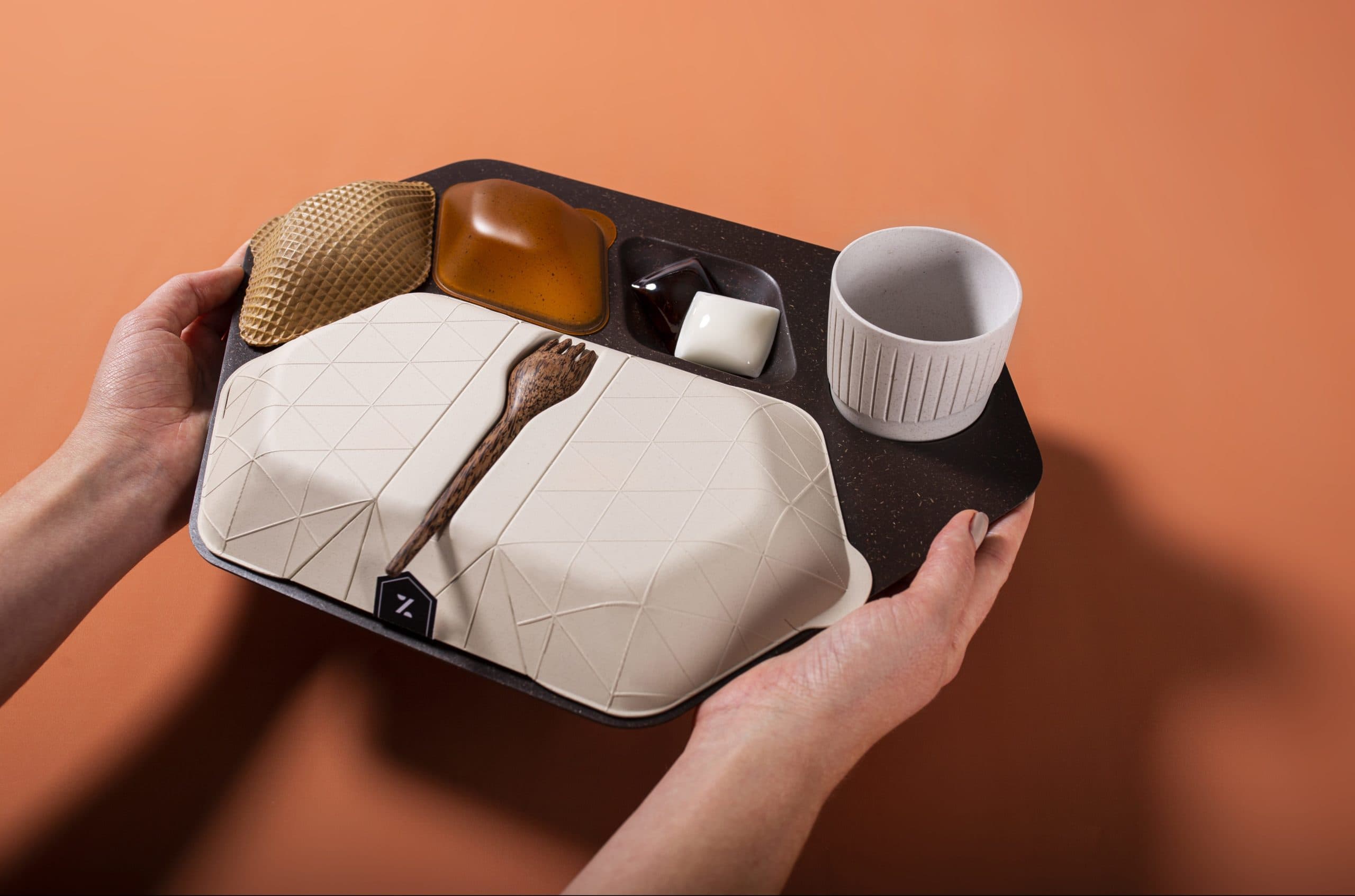PriestmanGoode Exhibition Offers Eco Alternatives to In-Flight Plastics
Share

A new exhibition in London by PriestmanGoode is aiming to raise awareness surrounding cabin waste produced by commercial airlines, which amounted to 5.7 tons in 2017. IATA predicts this figure could double to 10 tons by 2030, a weight equivalent to five million London taxis. Shocked by the statistics, the company is exploring how design can make a difference.
London’s Design Museum is currently showcasing “GET ONBOARD: Reduce. Reuse. Rethink,” an exhibition curated by design studio PriestmanGoode that focuses on minimizing waste in travel.
At a private viewing attended by APEX Media, Jo Rowan, associate strategy director at PriestmanGoode, explained, “The catalyst for what we’ve done is the learning that when traveling, a passenger on a long-haul flight may create 500 grams of single-use plastic waste which isn’t recycled.”
The exhibition offers ideas for either biodegradable or commercially compostable alternatives to plastic across four key areas: the meal tray in economy class, water consumption during flights, the amenities provided to passengers on board and material innovations.
A more sustainable economy-class meal tray, for example, could feature a coffee cup and saucer made from recycled coffee grounds, cutlery made from the palm wood of coconut trees or containers made from aqua faba, a by-product in the preparation of chickpeas.

As for the design of the meal tray itself, Anna Meyer, PriestmanGoode’s head of Communications, said, “We looked at creating a skeleton frame to reduce waste, because waste equals fuel equals emissions. Saving 100 grams per passenger doesn’t sound like much, but when you times that by 300 per flight, it soon adds up.”
“We also wanted to play with materials, so the lid of the dessert dish could be made of a wafer cone, and the exterior design is a representation of what is inside the dish,” Meyer continued. PriestmanGoode also envisions the use of edible drinks capsules, an innovation which has already been used to provide Lucozade Sport to runners during the 2019 London Marathon.
Beverages are a particularly important element of the exhibition. “We estimate that every passenger uses between eight and ten plastic bottles or cups on a long-haul flight,” Meyer said. “We’ve also designed a cup that you keep for the whole flight with an algae liner, that gets changed every time you want a different drink. The algae liner is tasteless and biodegradable. After each flight, the cups can be washed and re-used.”

Elsewhere, the design studio displays a short-term reusable water bottle comprised of cork and bioplastic made from corn stover, a by-product of the farming industry. “You will always have people who need to buy water at the airport, so can you make that impulse buy a more sustainable one?” The idea is that people could use this bottle – which has also been designed to take up minimal space during travel – during their holiday and then recycle it.
PriestmanGoode’s exhibition is as much about raising awareness among passengers as it is about offering suppliers ideas for the future. “There was an interesting paper commissioned by the EU that looked at travel behavior and waste. It found that even people who might behave sustainably in everyday life, who carry a refillable water bottle and who recycle for instance, might not do the same when they travel,” Meyer said.
“It’s partly because they don’t know if they can, but it’s also because there’s a prevailing mentality of “it’s just this one time, it won’t make a difference.” Multiply that one person by 4.1 billion, which is the number of flyers each year, it becomes a really big problem,” she continued.
The exhibition was launched as part of the Design Museum’s London Design Festival 2019 program. It will run until February 9, 2020.


